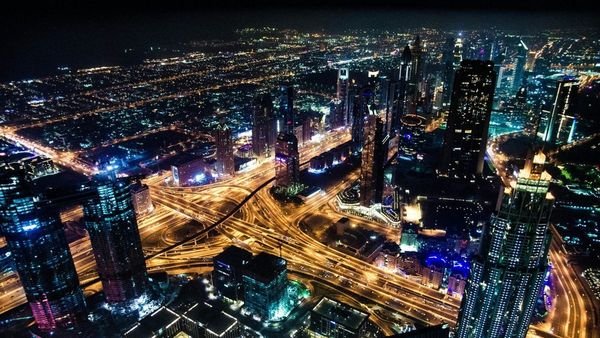The United Arab Emirates has once again cemented its role as a global innovation leader with the unveiling of the world’s first machine economy freezone. This groundbreaking initiative, led by Pulsar Group in collaboration with decentralised infrastructure platform peaq, sets the foundation for a new era of AI-powered, self-sustaining smart cities.
This is not just another freezone. It’s a bold declaration: the future of cities lies in decentralisation, automation, and intelligent machines.
A Machine Economy? Explained
Imagine a city where machines—drones, sensors, autonomous vehicles—don’t just operate. They trade, negotiate, manage resources, and even pay each other for services. All autonomously.

That’s the core of the machine economy.
This freezone is designed to support businesses that build, deploy, and scale these autonomous machine agents. From smart energy grids to delivery bots, the vision is to build a city where economic activity can happen independently of human interaction.
The Power Duo: Pulsar Group and peaq
Pulsar Group, known for its visionary smart city developments, has partnered with peaq, a pioneering Web3 platform for machines. Their combined expertise brings together urban innovation with decentralised digital infrastructure.
By leveraging peaq’s machine-centric blockchain technology, the freezone allows autonomous devices to function as individual economic units—capable of owning digital wallets, executing smart contracts, and transacting in real time.
This isn’t just technology. It’s an entirely new economic class emerging right before our eyes.
Why the UAE?
The UAE continues to push boundaries in technology and governance. Launching the first machine economy freezone aligns perfectly with its national ambitions to become a global capital for AI, automation, and smart infrastructure.
The country’s open policies, innovation-driven mindset, and strategic geography make it the ideal launchpad for this global first. By creating a regulatory sandbox for machine-led commerce, the UAE is turning vision into action.
A Glimpse Into the Freezone
This new machine economy freezone is built on four key pillars:
- Autonomous Economic Agents
Machines, like EV charging stations or self-driving vehicles, can initiate, complete, and log financial transactions without human input. - Decentralised Infrastructure
Peer-to-peer networks eliminate single points of failure, increasing reliability, security, and resilience. - Tokenised Incentive Models
Participants are rewarded in digital tokens for contributing compute power, data, or physical services to the ecosystem. - Interoperability Across Devices
The ecosystem is designed to be inclusive of different hardware, systems, and manufacturers—allowing any machine to participate in the economy.
This isn’t just a conceptual framework—it’s an ecosystem built for real-world functionality.
A New Model for Smart Cities

Imagine a city where streetlights request repairs automatically, autonomous taxis bid for passengers, and water meters pay for their own maintenance services. This freezone is not about futuristic thinking—it’s about applying existing technology in a new way.
Smart cities of the past were controlled from centralised dashboards. This freezone flips the model on its head—machines become the actors, not just the endpoints.
They operate, trade, and evolve in a decentralised, self-reliant environment.
Economic Opportunities Like Never Before
The machine economy opens doors for a new wave of investment, entrepreneurship, and innovation:
- Startups can deploy fleets of autonomous agents and monetise them from day one.
- Investors can own revenue-generating machine assets like delivery drones or edge compute nodes.
- Governments can reduce operational costs and improve service delivery through autonomous systems.
- Developers can build apps that interact directly with devices, not just people.
This is a whole new layer of economic activity—machine-to-machine (M2M)—and it’s only just beginning.
Regulatory Freedom to Innovate
One of the core strengths of this freezone is its ability to foster safe experimentation. The regulatory environment is being shaped to allow:
- Decentralised governance of digital and physical assets
- Real-world testing of autonomous agents under flexible compliance frameworks
- Seamless business setup for Web3 and AI startups
- Global talent acquisition and IP protection
By removing traditional bureaucratic barriers, the zone empowers bold innovation without compromising legal and operational safeguards.
The Road Ahead
This freezone is not a standalone effort—it’s the beginning of a global movement. Pulsar and peaq are already looking to replicate this model across other tech-forward nations.
In the short term, the focus will be on attracting:
- Robotics and drone startups
- IoT infrastructure builders
- Energy and mobility innovators
- AI software developers
- Blockchain and Web3 companies
The long-term vision is clear: create fully autonomous, economically viable smart cities that serve as blueprints for urban areas around the world.
Real-World Impact
The benefits of a machine economy freezone go far beyond innovation headlines:
- Efficiency: Machines make decisions faster and execute tasks with precision.
- Scalability: Infrastructure can grow dynamically as new devices join the network.
- Security: Decentralisation reduces cyber vulnerabilities and data misuse.
- Cost savings: Governments and enterprises save millions on automation and reduced overhead.
- Job creation: While machines handle repetitive tasks, humans focus on high-value roles in design, governance, and innovation.
This is not about replacing people. It’s about amplifying human potential by letting machines take over what they’re best at.
The Global Ripple Effect

As the world watches this model unfold in the UAE, it’s expected to influence urban planning globally. Forward-looking cities in Europe, Asia, and North America are already exploring machine economy frameworks.
What the UAE is launching today could soon become a new global standard—with cities designed from the ground up to be intelligent, efficient, and autonomous.
Conclusion: The Future Runs Itself
With this pioneering move, the UAE isn’t just imagining the future—it’s building it. The world’s first machine economy freezone is a bold leap into a new era of decentralised, AI-powered infrastructure.
They are no longer just tools. They’re now partners in progress—capable of contributing to real economies, managing public services, and even driving GDP growth.
This is the future of cities.
And it starts here.
Do follow UAE Stories on Instagram
Read More: Borouge and ADNOC L&S Seal $531M Deal to Fast-Track Petrochemical Exports













